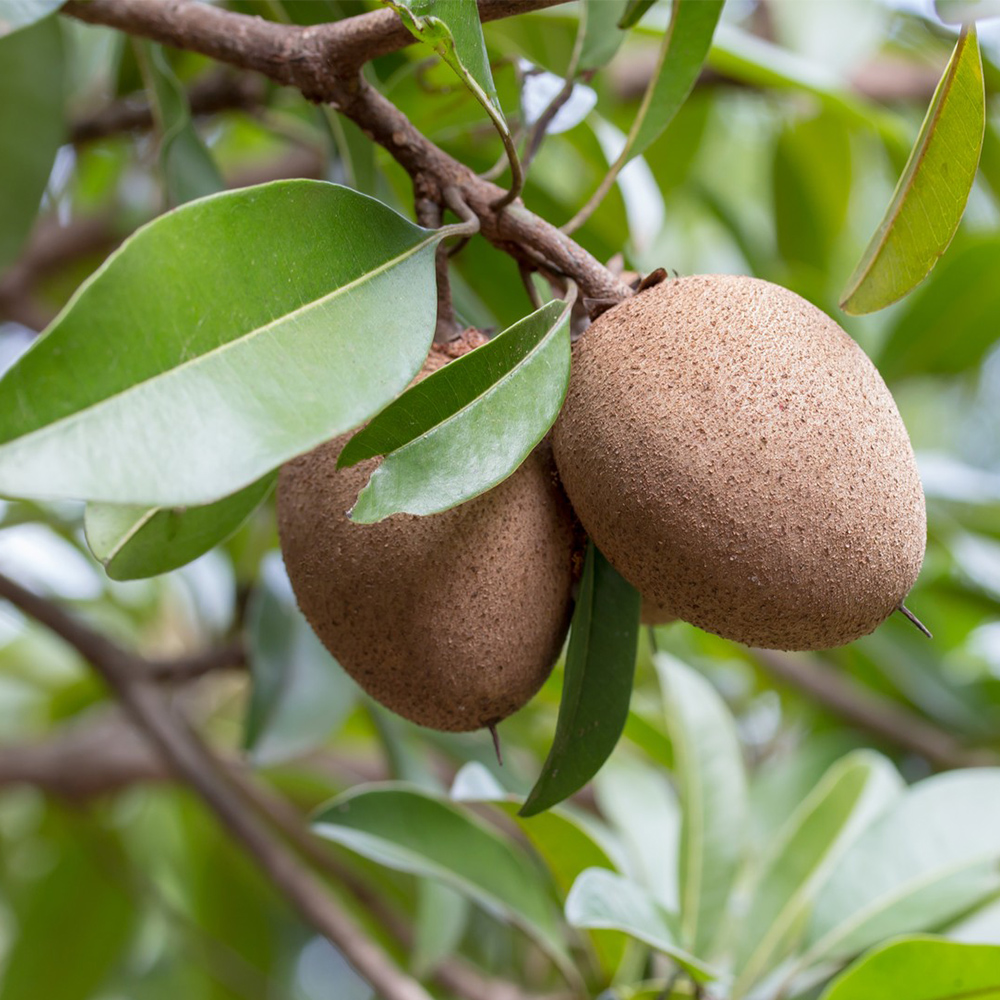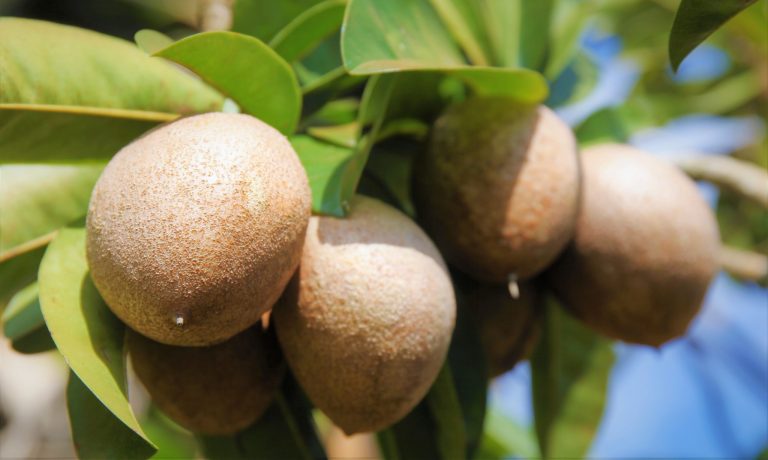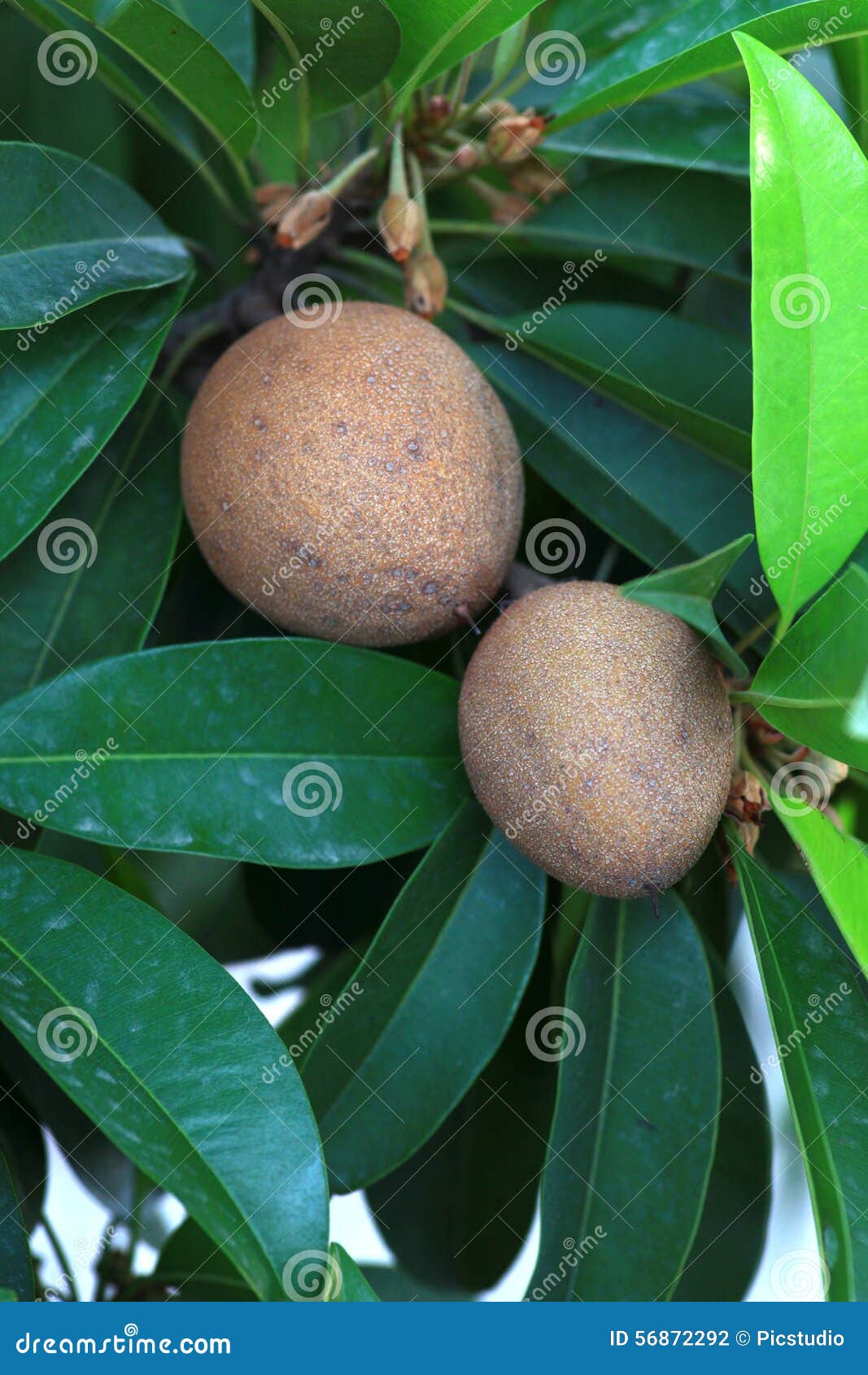

The interior pulp is of young sapodilla fruit is white with a heavy concentration of sticky latex, called saponin.
#CHIKOO LEAVES INFORMATION SKIN#
The sapodilla fruit is sand colored with a skin similar to a kiwi but without the fuzz. This evergreen fruit bearer hails from the family of Sapotaceae in the genus of Manilkara with a calorie rich, easy-to-digest fruit. If such weather occurs, the tree can also be covered with sheeting to aid in protection.

They may do equally well in arid or humid environments, although more severe conditions may result in lack of fruiting.ĭespite its temperature tolerance, if you want to grow a sapodilla tree in a less than semi-tropical area, it would be prudent to either grow it in a greenhouse or as a container plant that can be moved to a protected area in case of inclement weather. Sapodillas are not particular when it comes to water requirements. Sapling trees are more likely to sustain major damage or even die at 30 F.

Growing sapodillas are not strictly tropical and adult sapodilla fruit trees can survive temperatures of 26-28 F. It was then introduced and since cultivated throughout the tropical Americas, West Indies and the southern part of Florida. Growing sapodillas is thought to have originated in the Yucatan peninsula and nearby southern regions of Mexico, Belize and into northeastern Guatemala. You may recognize the name ‘Chicle,’ which refers to the latex excreted by the sapodilla fruit and is used as a chewing gum base. Sapodilla answers to quite a few monikers such as Chico, Chico sapote, Sapota, Zapote chico, Zapotillo, Chicle, Sapodilla plum and Naseberry. The answer to, “What is sapodilla fruit?” is quite simply a delicious tropical fruit ranking among the likes of mango, banana, and jackfruit.
#CHIKOO LEAVES INFORMATION HOW TO#
Let’s learn more about how to grow a sapodilla tree. As long as you care for sapodilla trees as suggested, you’ll find yourself benefiting from its healthy, tasty fruits in no time. You can even replace sugar with Sapota pulp in your desserts to whip up a great recipe.Like exotic fruits? Then why not consider growing a sapodilla tree ( Manilkara zapota). From babies to adults, this fruit offers plenty of goodness to everyone. Sapota is the most economical and effective way of imparting a healthy diet. Sapodilla Nutrition: Listed below is the nutritional value of Chikoo per 100 gms serving: Total Calories: 83 Total Carbohydrates: 20 gm Dietary Fiber: 5 gm Proteins: 0.4 gm Sodium: 12 mg Potassium: 193 mg Vitamin C: 24 % Magnesium: 3 % Vitamin A: 1 % Now that you have seen the various sapota fruit benefits, it’s time to sink your teeth into one. Chiku also helps in boosting your energy and alleviating fatigue. It is also amazing for strengthening your bones and teeth. Chiku helps in warding off constipation and other digestive problems. It is enriched with carbohydrates, fibre, Iron, Vitamin A, Vitamin C and Calcium. Is Sapota Good For Health? Chiku is a powerhouse of many vital nutrients. It has big black seeds which are inedible.

Sapota resembles a kiwi in appearance with fuzzy skin and brown coloured pulp inside. It is also called “Chikoo” in Hindi, “Sapota” in Telugu, “Cappotta” in Tamil, “Sapōṭā” in Kannada and Marathi languages. The Scientific name of Chikoo is “ManilkaraZapota”. What Is Sapodilla Fruit? Sapodilla is a brown coloured, oval shaped fruit grown in tropical climates. Let’s get started to understand some of the best sapota fruit benefits (Chiku fruit benefits). Sapodillas are packed with nutrition to support the functioning of your body. Chikoo fruits are known for their deliciously sweet pulp, which is a popular ingredient in many smoothies, shakes and desserts. This evergreen tree is native to Central America and Mexico but is also widely cultivated in India. Remember those good old days, when we’re offered tiny, gooey pieces of Sapota fruit for a mid-day snack? Sapodilla is a tropical fruit that can literally grow anywhere and is a common sight in most backyards.


 0 kommentar(er)
0 kommentar(er)
